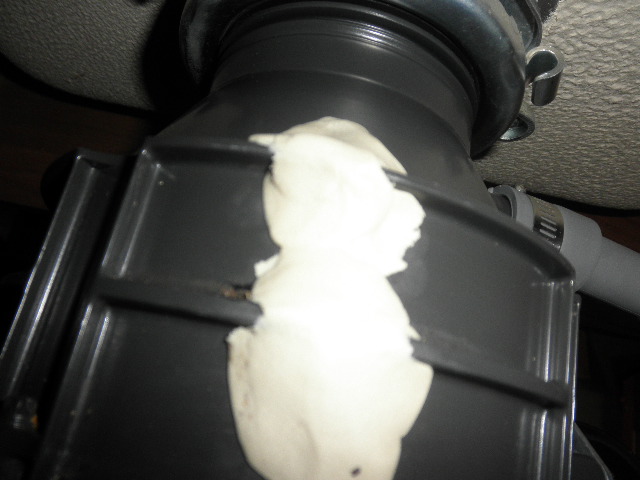Presented here below you will discover some reliable details in relation to The Handy Guide To Fixing Your Garbage Disposal Leaking.

Waste disposal unit are crucial cooking area devices that aid in dealing with food waste efficiently. However, a leaking garbage disposal can be an aggravating and unpleasant trouble to handle. Thankfully, lots of leaks can be fixed easily with a few easy actions. In this article, we will certainly review just how to repair a leaking garbage disposal properly.
Intro
Garbage disposals are set up under cooking area sinks and are made to shred food waste right into smaller items, enabling it to travel through the pipes system quickly. While these tools are generally trusted, leakages can take place with time because of wear and tear, loosened links, or damage to the device.
Common Reasons For Leaks in Trash Disposals
Worn Seals and Gaskets
Seals and gaskets play a crucial function in preventing water from dripping out of the waste disposal unit. In time, these components can degrade, resulting in leakages around the disposal system.
Loose Links
The links between the waste disposal unit and the pipes system can end up being loosened with time, triggering water to leak out throughout procedure.
Splits or Holes in the Disposal Device
Physical damage to the garbage disposal, such as fractures or holes in the housing, can additionally cause leaks.
Recognizing the Resource of the Leak
Prior to trying to take care of a leaking garbage disposal, it is vital to identify the resource of the leakage. This can usually be done with visual evaluation or by carrying out straightforward examinations.
Visual Evaluation
Examine the waste disposal unit system thoroughly for any indications of water leakage. Pay attention to areas around seals, gaskets, and connection factors.
Evaluating for Leaks
One method to evaluate for leakages is by running water via the disposal unit and looking for any type of visible indicators of leakage.
Devices and Products Needed for Taking Care Of a Leaking Waste Disposal Unit
Before starting the fixing procedure, gather the needed tools and products, consisting of a screwdriver, adjustable wrench, plumbing professional's putty, substitute seals or gaskets, and epoxy or patching product for repairing fractures or holes.
Step-by-Step Overview to Dealing With a Dripping Garbage Disposal
Turn Off the Power
Before trying any repairs, make certain that the power to the garbage disposal unit is switched off to stop the danger of electrical shock.
Locate the Leakage
Identify the specific area of the leak and establish the cause.
Tighten Connections
Utilize a wrench to tighten any kind of loose links between the disposal device and the pipes system.
Replace Seals or Gaskets
If the leak is due to worn seals or gaskets, get rid of the old parts and replace them with brand-new ones.
Patching Splits or Holes
For cracks or openings in the disposal device, usage epoxy or a suitable patching product to secure the broken location.
Evaluating the Waste Disposal Unit After Repair Service
When the fixing is complete, examine the waste disposal unit by running water with it to guarantee that the leak has actually been settled.
Preventive Maintenance Tips to Prevent Future Leakages
To stop future leakages, it is necessary to execute routine maintenance on your waste disposal unit. This includes maintaining it tidy, preventing placing non-food things or tough objects down the disposal, and regularly checking for leaks or various other issues.
Verdict
Finally, dealing with a leaking waste disposal unit is a fairly simple process that can be completed with standard devices and materials. By complying with the steps laid out in this short article and practicing preventative maintenance, you can maintain your waste disposal unit in good working problem and avoid costly repair services in the future.
What to Do About a Leaking Garbage Disposal
A leaking garbage disposal often goes unnoticed until you confront a sopping cabinet, a foul-smelling puddle, or an audible drip-drip-drip from the unit. The fix can be frustrating, too, because the leak can stem from a number of components in the system. Fortunately, with a little sleuthing, you can zero in on the leak and—depending on the exact location—stop the icky oozing and repair the component that caused it. Worst case scenario, if it turns out that the garbage disposal must be replaced, installing a new one is a reasonable do-it-yourself task for those with basic plumbing skills. Read on to keep the cash you’d otherwise hand over to a pro.
Prepare to find the leak
Prior to testing the garbage disposal for leaks, unplug it at the wall outlet and turn off the power from the breaker box to prevent electrical shock. Then insert a watertight sink stopper into your sink drain and wipe the unit dry with a clean cloth. In any handy container, mix a few drops of food coloring into a few cups of water, and pour the dyed water onto the sink stopper to help you locate the leak.
Investigate the source
the top, where the disposal meets the sink drain the side, where the dishwasher hose or main drain pipe connects to the disposal or the bottom of the unit Inspect each of these locations while gliding a light-colored rag over the unit; the dyed water will readily show on the rag and reveal the location of the leak. If a leak isn’t immediately apparent, remove the sink stopper and pour a few more cups of dyed water down the sink drain, then check for leaks again. Leaks near the top of the unit are more likely to show themselves while the sink is plugged, while side and bottom leaks are more noticeable while the sink is unplugged.
The metal sink flange that sits directly inside the sink drain is typically sealed around the top with plumber’s putty (a clay-like sealant) and then secured from under the sink with bolts. If the plumber’s putty deteriorates, or the bolts loosen, the flange can no longer form a watertight seal between the sink drain and the disposal—which could cause a leak at the top of the unit.
To reseal the leaky flange, you must first detach the garbage disposal. Start by loosening the screws securing the main drain pipe to the disposal, then loosen the screws in the metal clamp securing the dishwasher hose to the disposal and detach the drain pipe and dishwasher hose from the disposal. Loosen the screws in the mounting ring that connects the disposal to the metal mounting assembly beneath the sink, then pull down the disposal and carefully set it on a clean, dry surface. Loosen the bolts in the mounting assembly with a wrench, then pull down the mounting assembly and set it near the disposal.

As a passionate person who reads on The Handy Guide To Fixing Your Garbage Disposal Leaking, I figured sharing that excerpt was worth the trouble. Do you know about another individual who is curious about the topic? Please feel free to share it. Thank-you for taking the time to read it.
Visit